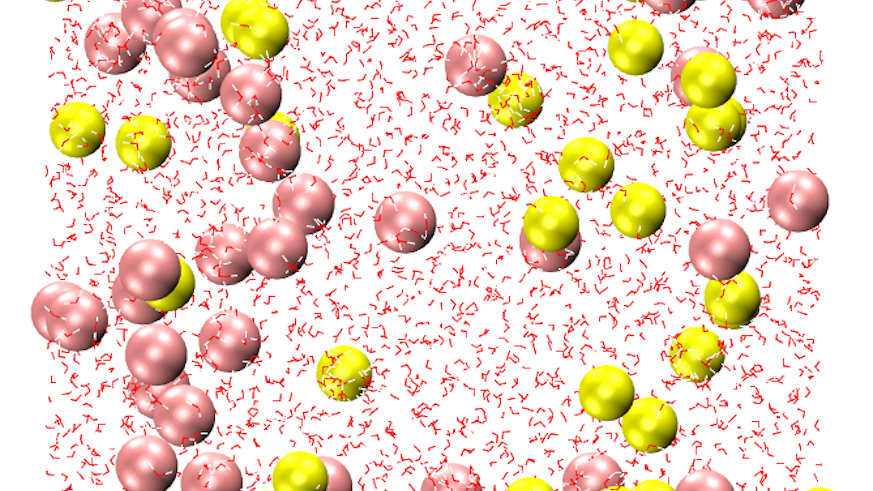Newly discovered chemical phase could aid development of green catalysts
23 August 2018

Researchers from Cardiff University and the University of Leeds have discovered a new nanoparticulate and highly reactive iron sulfide (FeSnano) phase.
Cardiff University Pro Vice Chancellor Nora de Leeuw is the Principal Investigator of the Natural Environment Research Council-funded consortium project that made the discovery, which provides new insight into the biochemical and geochemical processes of iron and sulfur in ancient and modern environments on Earth. This new-found knowledge could also lead to the development of new materials for industrial applications, for example in the sustainable catalytic conversion of carbon dioxide.
In the iron sulfide system, pyrite is the most stable known mineral that forms through the transformation of intermediate minerals such as mackinawite and greigite. Until now, it was believed that the formation of pyrite starts with the formation of mackinawite as the first solid iron sulfide mineral. However, Professor de Leeuw and her colleagues demonstrated the existence of a different solid phase (FeSnano) which precedes mackinawite. The realisation of the existence of a new precursor phase opens new venues for different industrial applications.
The researchers used a combined experimental and computational approach to arrive at their findings. They carried out the synthesis in strictly oxygen-free conditions and used a combination of high-resolution transmission electron microscopy, X-ray photoelectron spectroscopy, X-ray diffraction and synchrotron absorption spectroscopy to support their findings, backed up by calculated spectra showing that the new phase is neither mackinawite nor any other known phase. The new FeSnano phase, shown through its pathway from formation, stabilisation, separation and characterisation, contains both reduced and oxidized iron, as well as monosulfides and polysulfides.
The article detailing the discovery has been published in Nature Communications. Lead author Dr Adriana Matamoros-Veloza (University of Leeds) says: “This is an important piece of work to demonstrate that the formation of sulfide minerals follows unpredictable pathways to reach the most stable structure as seen in many other oxide systems.”
Professor de Leeuw commented: “This work is a clear example of the power of combining computation with multiple experimental techniques to carry out high quality research, which has such a strong tradition in the UK.”
The article is publicly available on the Nature Communications website.